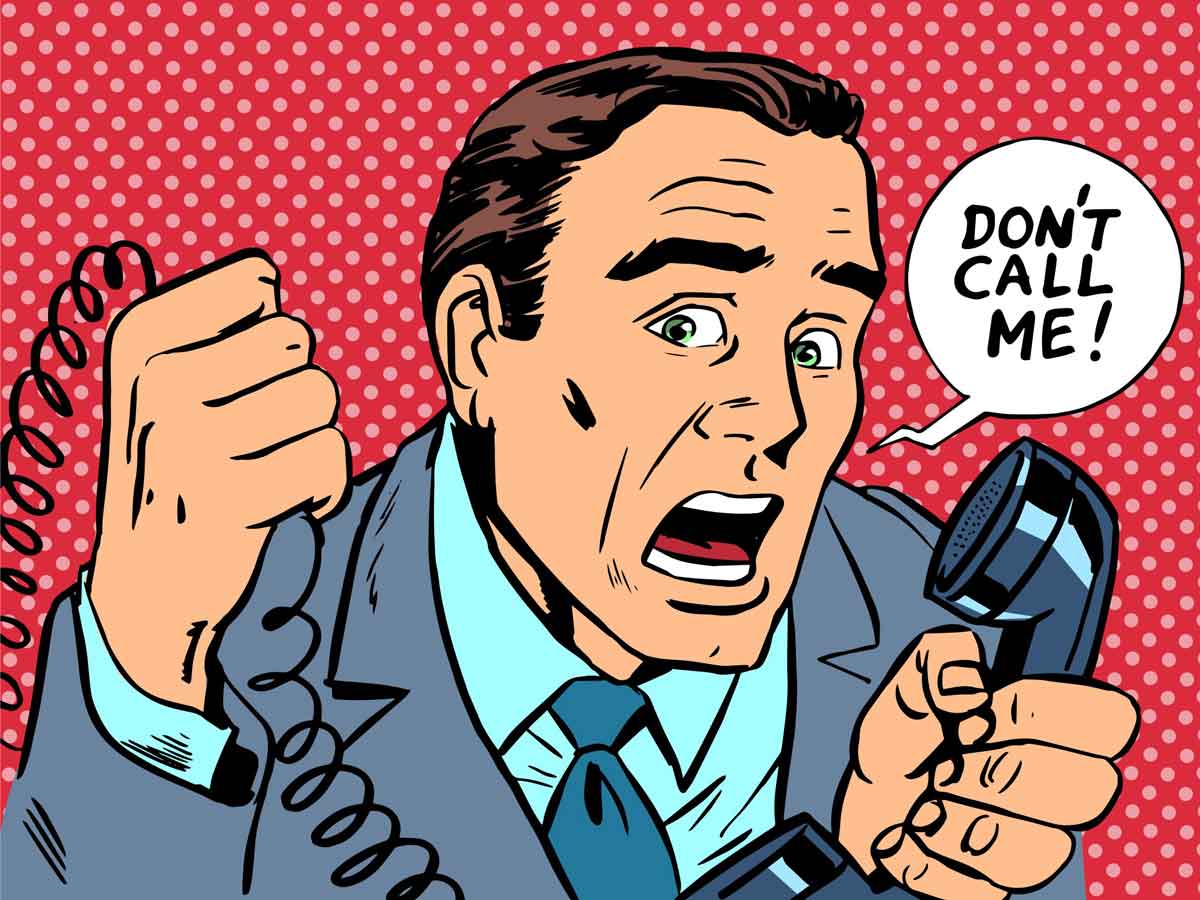Contrary to popular belief, dialers are not used just for telemarketing. The right dialer can turn any inbound contract center into a powerful blended contact center to help accelerate business growth. The challenge is selecting the best dialer for the task at hand. This guide will review different types of dialers, and help you decide which dialer is best suited for you. We will also look at compliance risks associated with using dialers along with the many benefits a dialer can deliver. And finally, we provide some key factors to consider when looking for a dialer.
What is a dialer?
A dialer is defined as software used for automatically calling telephone numbers. A dialer is also commonly known as an auto dialer, or predictive dialer. A dialer is frequently used to automatically make a large volume of outbound telephone calls. It is often used by inside sales teams to prospect for new customers and is a technology that primarily distinguishes an outbound call center from an inbound call center. A dialer can be very basic or very sophisticated depending on needs. As a result, there are many dialer variations.
Comparing dialers
Let’s explore the different kinds of dialers and how they differ.
Auto dialer
An auto dialer is the most basic of dialers. As its name implies, it automates simple outbound calling functions. An auto dialer will automatically place calls to contact numbers supplied from a list. If a call is answered, an auto dialer can play a recorded message and even ask recipients to choose response options by pressing keys on their telephone handset. Auto dialers are well suited for proactive notifications or unattended actions like completing an automated survey.
Power/progressive dialer
A power dialer is different from an auto dialer in that a power dialer is designed to be used by a live agent (support or service agent, salesperson or similar). A power dialer will automatically place calls to numbers supplied from a list (typically provided by a CRM). However, a power dialer will only place a single call for one agent at a time. Each call is automatically initiated once an agent concludes the prior call. A power dialer makes it earlier for agents to place outbound calls and improves agent efficiency. However, a lot of time is still wasted as agents wade through unanswered numbers (e.g., disconnected, busy, no answer, hang up, or answered by FAX or auto-attendant.) A power dialer is suited for a small sales team or a contact center that needs to make infrequent outbound notification calls like for a product recall or similar.
Preview dialer
A preview dialer (sometimes also called a click-to-call dialer) is like a power dialer but with one important distinction. A preview dialer is often used with a CRM and may be integrated right into the CRM desktop. When an agent is ready to place a call, the CRM will display the customer record associated with the contact number. This gives an agent time to preview the customer data before the call is placed. When the agent is ready, then they instruct the dialer to proceed.
Predictive dialer
A predictive dialer is “smarter” than a power dialer. A predictive dialer effectively eliminates the wait times needed to find a live recipient. This dramatically improves agent efficiency and productivity. To accomplish this, a predictive dialer uses algorithms to predict the number of calls to make by considering the expected answer rate, call duration, and number of live agents available. The goal is to predict the number of calls to make so each agent stays busy talking to prospects or customers. With this objective, a predictive dialer will place multiple, simultaneous calls and when a live answer is detected it will route the call to an agent. Unfortunately, the call recipient will often experience a small delay due to the connect time. As a result, some call recipients have learned to associate this delay with an unsolicited call and hang up before a live agent can respond.
When is a dialer not a dialer?
Today’s dialers initiate outbound communications using primarily a voice channel. However, as customer preferences expand to include the use of other channels such as email, and SMS, dialers are also keeping pace by supporting outbound digital channels. As a result, the right dialer can help you initiate outbound communication using SMS, email, or other channels as an alternative to voice.

Business Risk -- TCPA compliance
In 1991 the United States Congress passed the Telephone Consumer Protection Act (TCPA). This act created restrictions on unsolicited telephone solicitations and defined the lawful the use of certain kinds of communications technologies and methods including automated dialers, SMS text messages, FAX’s, and pre-corded messages. TCPA imposes conditions upon those who engage in telephone sales solicitation (often referred to as telemarketing). Some of the regulations include:
- Restrictions to prevent calls being made to emergency services (e.g., 911, hospitals, etc.)
- Establishing a window of time (8am to 9pm) during which calls may be made
- Allowing recipients to “opt-out” to stop receiving calls
- Prohibiting unsolicited fax messages to personal-use phone numbers/fax machines
- Requiring the organization placing the calls to identify the party responsible for the solicitation
- Unanswered calls must meet certain criteria (e.g., rings, duration, and total number of calls)
Simply stated, it is illegal to make any call (other than one for emergency purposes or placed with express prior consent) using any automatic telephone dialing system or any artificial or pre-recorded voice message to phone numbers – landline or wireless.
TCPA was enacted to prevent unsolicited calls using some form of dialing automation and/or employing pre-recorded messages. Here is an important distinction to remember. Placing an unsolicited telemarketing call is not necessarily a violation of TCPA. However, the risk of violating TCPA rises when the call is made with the aid of an automated dialer.
National Do Not Call Registry
TCPA prohibits unwanted telemarketing calls (regardless of whether a dialer is used). TCPA assumes calls are “wanted” unless someone expressly “opts out” from receiving such calls. The National Do Not Call Registry (DNCR) is the official opt-out list. Telemarketers are prohibited from contacting any number placed in the DNCR.
Penalties and risks
Penalties for violating TCPA can be severe. Each unintended violation is subject to a $500 penalty. Penalties for deliberate violations are tripled – or $1,500 per violation. Furthermore, there is no statutory limit on penalties imposed. For example, willful violation on 1,000 contacts may cumulate in to a $1.5M penalty.
As outbound contact centers embrace other channels then compliance with other regulations may be required. For example, when outbound communications are conducted using email, then the US CAN-SPAM act must also be observed. And although unrelated to the use of dialers, there are other regulations that US telemarketers must follow. These include the FTC Telemarketing Sales Rule (TSR) and The Electronic Communications Privacy Act (ECPA).
Finally, these regulations are constantly being tested in the courts which often bring clarification to terms and usage and can affect how these technologies are used. For example, courts have determined that, as far as TCPA violations are concerned, “a call is a text, and a text is a call”. Therefore, it is always advisable to consult with an expert to understand compliant dialer use.
Complimentary solutions
Dialers rarely exist as stand-alone systems. They are often used together with other contact center systems like ACD, customer relationship management (CRM) software or Interactive Voice Response (IVR) systems.
Omnichannel ACD
Many contact centers blend outbound campaigns with inbound interaction handling. In such a blended contact center, the dialer is seamlessly integrated with the ACD that routes and distributes inbound digital and voice contacts. Blending inbound and outbound interactions creates efficiencies and improves agent utilization. Contact centers may train agents for handling both inbound and outbound calls, so that agents can handle outbound campaigns while inbound volume is low, or agents usually working on outbound campaigns can help handle inbound volume when needed to keep Service Levels.
CRM
By using a CRM with your dialer, you can create an efficient outbound communications solution. Often the CRM provides the contact lists that are automatically fed to the dialer. These lists may be prospect or customer contacts and may be selected using various CRM filters. In addition, some dialers can even update CRM contact records by adding notes documenting when calls were placed and what their outcome was and use this information to update dialing lists in near real-time. This ensure that agents do not use outdated dialing records, which can lead to a poor customer experience.
Finally, when a power, preview or predictive dialer is used with live agents, the dialer can initiate a screen pop from a CRM which provides the agent with a summary of all prospect or customer interactions. This configuration is popular with outbound telemarketing contact centers.
IVR
An dialer can be used with an IVR to create an agentless campaign (aka “message laydown”) including options. Once a call is answered, a message can be played, and the call recipient asked to select an option using either their telephone handset or voice response. These responses are then used to route a call to a live agent or provide access to other automated services. This configuration is popular with outbound contact centers offering proactive reminders or alerts, automated appointments, account information, surveys and more.

What to look for when buying dialer software
There are many different dialers available. Some are very basic, and others with more capability. The dialer you chose ultimately comes down to your needs. Here are some factors to consider.
Dialing modes
Dialers are specialized and can deliver specific features based on what your outbound call center requires. Look for a dialer that can deliver all the dialing modes –power, preview and predictive – so you always have the right outbound method for the task at hand. For example, you may start with telemarketing but may want to deliver proactive notifications in the future.
Campaigns
Often, outbound initiatives have specific objectives and requirements. As such, each may require targeted or adaptive call lists, call scripts, certain agent skills, and unique execution timing or pacing. The ability to bring these elements together is often described as a campaign. Look for a dialer that can help you organize, manage and report all these activities using flexible campaigns. Even better if your campaigns can contain multiple channels – for example, start by sending an interactive text message, then follow up with an agentless outbound call and finally an agent-assisted call at configurable intervals.
Voice and digital interaction channels
Outbound call centers may need to support more than telemarketing. Some contact centers may want to offer a routine follow up or proactive notifications. In addition, not all customers prefer voice communications. Some customers may prefer email, SMS text or something else. Look for a dialer that will support all your outbound requirements using the interaction channels your customers prefer.
No-pause answer
Unfortunately, the pause that follows a dialer-connected call has for many consumers become a signal to hang up. To ensure your agents talk to more people, you must eliminate that pause. Look for a dialer that lets your agent immediately respond to the very first hello.
Compliance
Making sales calls to prospects requires extra care to stay ahead of various compliance requirements including privacy and TCPA. Look for a solution that helps you dial worry free by helping you to create an outbound solution that fulfills your specific compliance needs.
All in one
For a contact center that performs any outbound functions, a dialer should be tightly integrated not only with a CRM, IVR and the agent desktop, but also with your omnichannel ACD, reporting, workforce and quality management and customer feedback functions. Look for a solution that delivers all of this as part of an all-in-one contact center. As a bonus, also look for a solution that can also offer custom voice services including local number support.
Top 5 benefits of using dialer software
We’ve saved the best for last. What benefits does a dialer offer? Here are a few:
Agent efficiency
Dialers dramatically improve agent talk time – the time spent talking to new prospects, or upselling customers. The more talk time, the better. For example, without a dialer, an agent might spend 10-15 minutes every hour in a productive sales conversation. However, a dialer can increase this to as much as 30-45 minutes every hour.
Lower operating costs
Dialers directly and dramatically improve labor costs. By improving agent talk time, you reduce the need for more agents. These saving can be used to lower operating costs or reinvested into your business.
Improved customer experience
By offering proactive customer communications, including alerts, notifications, reminders along with access to associated self-service options; and to do this offering a wider choice of interaction options, customers will find it easier and more convenient to interact with the business. This contributes to higher customer satisfaction.
Improved business outcomes
Aside from the benefits of lower operating costs, dialers may offer managers new KPIs to help them be better managers by identifying performance gaps and implementing corrective actions. For example, new KPIs may include connect rates correlated against list selections, time of day or other variables. Using these new insights, managers will have more options to make improvements which will lead to better outcomes.
Reduced regulatory risk
A purpose-built outbound call center, complete with integrated dialer, reduces complexity, and is built with compliance in mind. This reduces the effort needed to establish and maintain compliance and translates to lower business risk and operating cost.
Watch this video to see how these contact centers uses a full-featured dialer to grow their business.
As you can see, dialers are not just used for telemarketing! The right dialer can turn your inbound contact center into a critical asset that helps your business grow. The key to unlocking the power of a blended contact center is to make the right dialer selection by considering your operating and compliance requirements. Making the right choices will deliver big benefits for years to come.
To help you visualize everything in a complete dialer, watch this CXone Personal Connection overview video. Once you’re ready to take the next step, why not consider a free trial.
For more information
Whitepaper: Outbound Calling: Addressing Complex Compliance Requirements
Whitepaper: Outbound Call Center Software for Superior Connectivity




